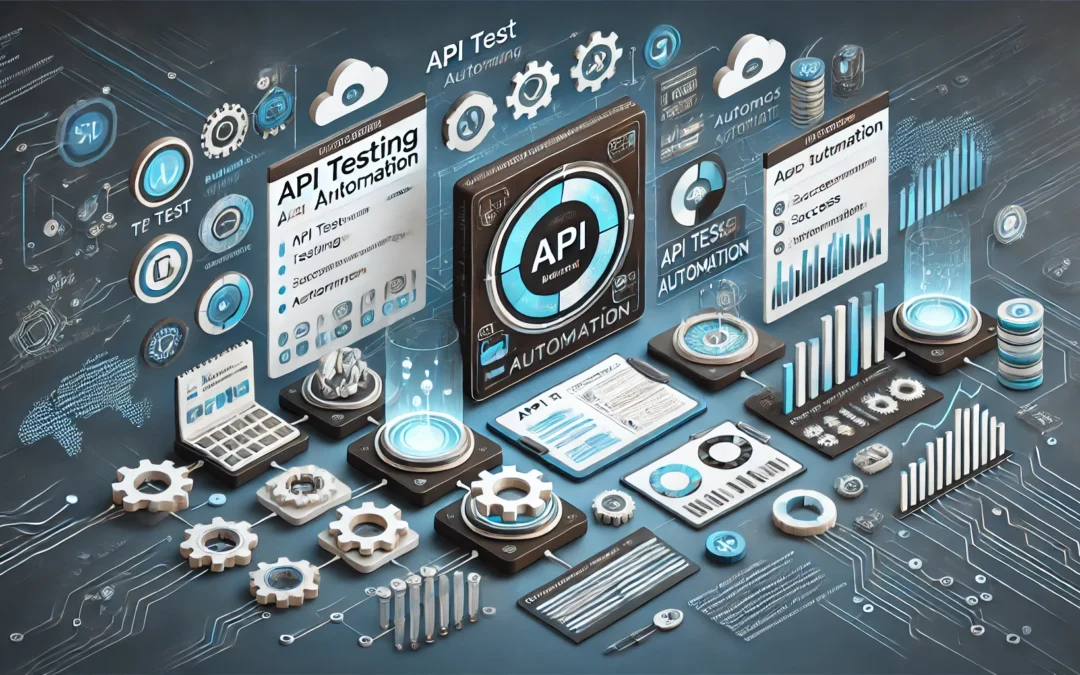Software evolution requires strict attention to API testing automation systems. The automation of API testing continues to develop progressively.
Modern software development needs APIs (Application Programming Interfaces) for granting beneficial communication relationships between applications along with services and platforms.
API testing services have become essential for companies because microservices together with cloud computing and digital transformation require API testing for integration purposes and security
purposes and to maintain performance.
Engineers together with software testers and architects need to understand the critical new trends in API testing automation which will arise in 2025 according to this blog.
1. Shift-Left Testing & Early API Validation
API testing traditionally takes place at the later stages of software development
lifecycle (SDLC). Early implementation of shift-left testing enables API validation which decreases
both coding errors and rehashing work.
Benefits:
• Correcting issues becomes more efficient because testing is performed earlier which reduces
both time and expenses for debugging.
• The integration of API tests within CI/CD pipelines enhances both the quality of developed
software.
• The system allows developers to receive quick feedback through automated processes.
Implementation:
• The development phase requires automated testing of APIs.
• Several API testing tools such as Postman, RestAssured and Karate must be integrated into
CICD pipelines.
2. AI-Driven API Testing Automation
The combination of Artificial Intelligence (AI) and Machine Learning (ML) enables API
testing optimization through automatic generation of tests as well as execution and maintenance
processes.
Key Advantages:
• Predictive analytics enable AI-based tools to forecast test failures which will happen in
advance.
• Machine learning enhances test coverage by generating intelligent test cases.
• Test script maintenance operations become less manual through this approach.
Popular AI-Powered API Testing Tools:
• Postman (AI-assisted test creation)
• Test.ai (AI-driven test automation)
• Applitools (AI-based visual testing)
3. API Test Automation with Low-Code/No-Code Tools
Testers using low-code/no-code platforms now have the ability to automate API tests
even without extensive coding background thus reducing their reliance on developers.
Benefits:
• Speeds up test automation and enhances collaboration.
• The process of scripting test cases takes less time due to the integration.
• The tool enables testers who lack technical skills to participate in API validation procedures.
Popular Low-Code API Testing Tools:
• Postman (Automated testing workflows)
• Katalon Studio (Scriptless API test automation)
• TestProject (Free end-to-end API testing platform)
4. API Security Testing Automation
API security emerges as the highest organizational priority because of increased
cyber threats. Security tests carried out automatically provide early vulnerability detection in systems.
Key Security Risks:
• OWASP API Security Top 10 vulnerabilities (e.g., broken authentication, data exposure).
• API misconfigurations can provide unauthorized access to the system.
Best Practices & Tools:
• Implement security scans within CI/CD pipelines.
• Use tools like OWASP ZAP, Burp Suite, and Postman Security Scan.
5. Contract Testing for Microservices
Because microservices use APIs for communication between services, contract
testing stands as a necessity to verify their compatibility.
Benefits:
• Prevents breaking changes in microservices.
• The API contract stays consistent throughout all system deployments because of this system.
• The API creates better communication channels between frontend developers and backend
engineers.
Top Contract Testing Tools:
• Pact (Consumer-driven contract testing)
• Spring Cloud Contract (API contract validation for Java apps)
6. Performance and Load Testing of APIs
APIs must maintain peak operational efficiency at high volumes of traffic. API stability
during stress conditions becomes possible through performance testing measures.
Key Considerations:
• The testing process includes load testing that models actual network usage.
• Stress testing measures API stability factors when exposed to maximum usage conditions.
• Scalability testing for cloud-native APIs.
Top Performance Testing Tools:
• JMeter (Open-source load testing tool)
• k6 (Cloud-native performance testing)
• Gatling (High-performance API load testing)
7. API Virtualization for Efficient Testing
API virtualization makes it possible for testing to take place in situations where using
the real API is inaccessible or would require significant resource allocation.
Benefits:
• Simulates third-party APIs for testing.
• The system helps decrease reliance on active API endpoints.
• The tool enhances speed in product development and testing processes.
Popular API Virtualization Tools:
• WireMock (Mocking API responses)
• Mountebank (Service virtualization framework)
• Parasoft Virtualize (Enterprise-grade API simulation)
8. CI/CD Integration and API Test Automation
API testing plays an essential role in DevOps approaches by providing uninterrupted
quality checks in CI/CD implementation.
Best Practices:
• API tests should be automated to run during continuous integration and continuous delivery
processes.
• Using version control systems should be established for maintaining API test scripts.
• You should employ API monitoring to validate your system in real time.
Popular Tools for CI/CD API Testing:
• Newman (Postman CLI for automated tests)
• RestAssured (Java-based API testing framework)
• Karate (Unified API testing tool for CI/CD integration)
Future of API Testing
Predictions for 2025 and Beyond:
• Self-Healing Tests: AI-driven test automation tools that auto-fix broken test cases.
• Blockchain API Testing: Ensuring the reliability and security of blockchain-based APIs.
• API Observability: Advanced monitoring and analytics for API performance and health.
How to Stay Ahead:
• Continued acquisition of knowledge about API testing must happen through official courses
which offer certifications.
• Test AI and ML-based testing tools.
• Patronize both API testing communities and industry leader groups.
Conclusion
The development of API testing automation speeds up thanks to AI advances as well as security
requirements and DevOps system consolidation. Engineers testers and architects need to use
contemporary API testing methods and instruments to maintain competitive advantage.
Which direction do these modern trends appeal to you? Please share your observations and
knowledge through the provided comment section.


Recent Comments